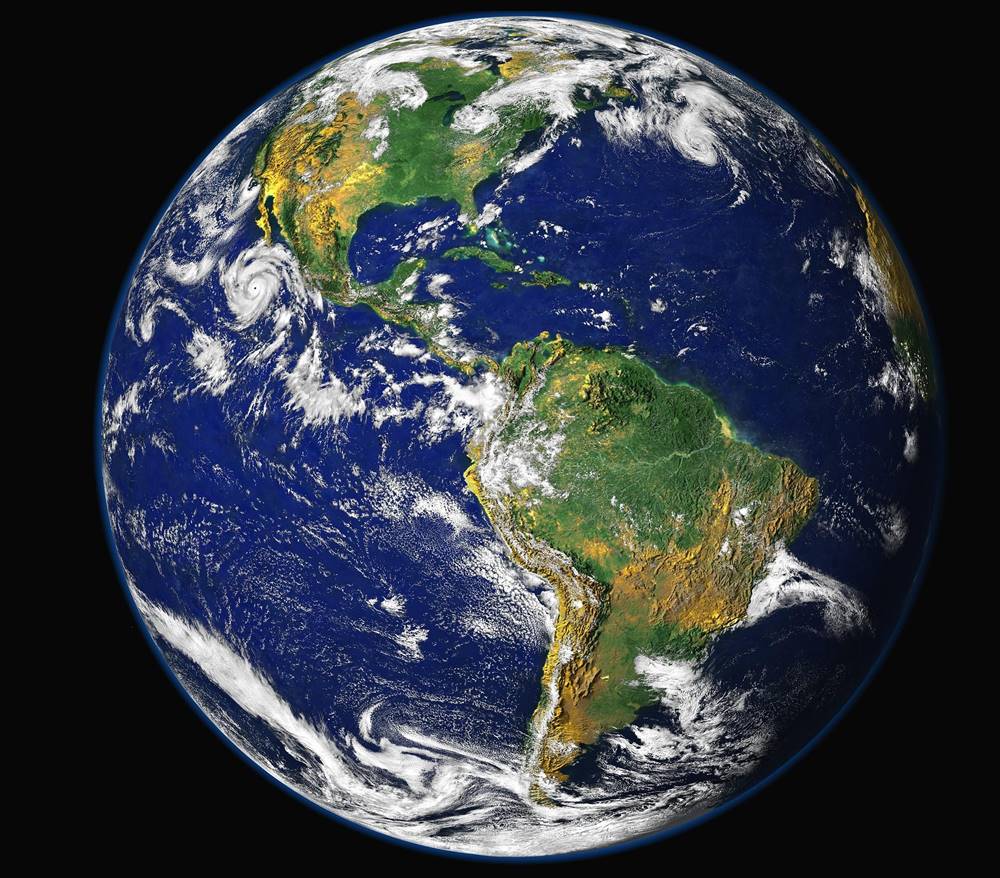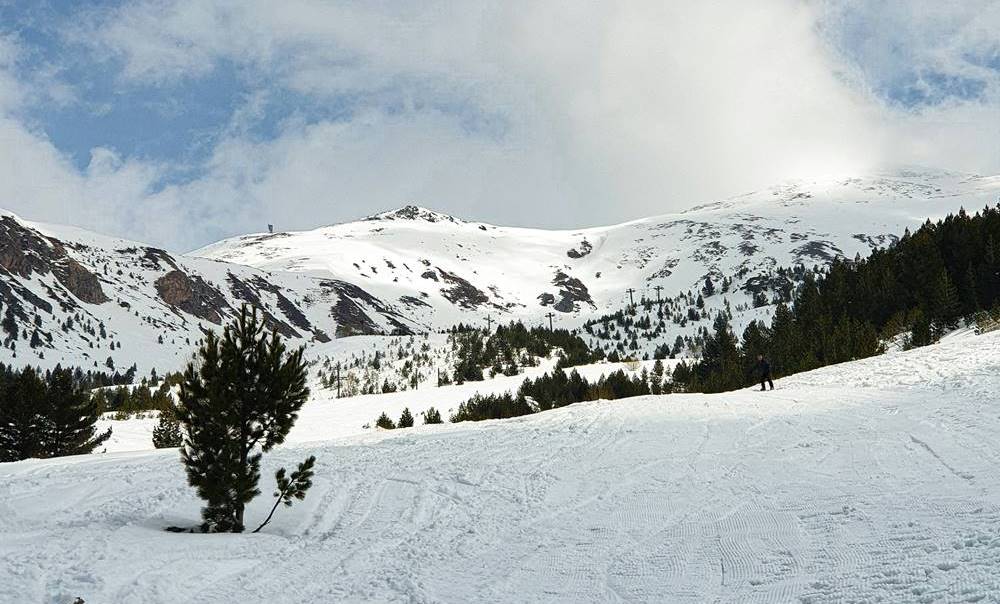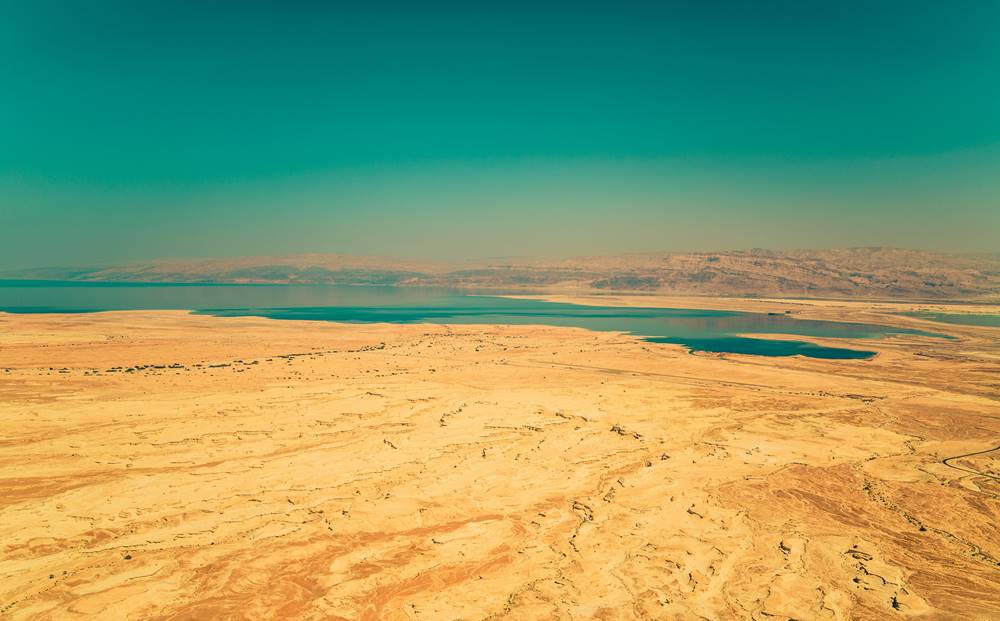Facts about the Earth | Top 10 Interesting Earth Facts
I'm excited to share the ten most interesting things about our beautiful planet, Earth. These are must-know facts that everyone should learn. So, in this post, I'll tell you the most fascinating and important facts about Earth.

In addition to the other ten interesting facts, I will list some other amazing facts about the earth at the end of this post.
Fact No. 1
The fact that Earth is the third planet from the sun and the only known planet to support life is a fundamental fact about our planet and its place in the solar system.

The solar system is made up of the sun and all the objects that orbit it, such as planets, dwarf planets, moons, asteroids, and comets.
Earth is the third planet from the sun and one of the eight planets in our solar system.
According to our current scientific understanding of the universe, Earth is the only planet known to support life. There may be other planets in the universe that support life, but we have yet to discover any evidence of life beyond our own.
Because of its atmosphere, magnetic field, and internal geological activity, Earth can support life because it is in the solar system's habitable zone, which is the area around a star where conditions are just right for liquid water to exist on a planet's surface.
Overall, this fact describes Earth's position and its unique ability to support life, which distinguishes our planet from the other objects in our solar system.
Fact No. 2
The planet has a diameter of approximately 12,742 km (7,918 mi), weighs 5.97 x 1024 kg, and has a density of 5.52 g/cm3.
Let's examine these three parameters of our planet:
- Diameter: Earth's circumference is approximately 12,742 kilometers (7,918 miles). Thus, Earth is the largest of the four inner planets in our solar system. The equatorial diameter of Earth is a little larger than the polar diameter due to the planet's rotation.
- Mass: The mass of the Earth is roughly 5.97 x 1024 kilograms (5.97 trillion trillion kilograms). Earth is the largest planet in the inner solar system as a result. Earth has a mass that is roughly one-third that of Jupiter, our solar system's largest planet and a gas giant.
- Density: Earth's density is roughly 5.52 grams per cubic centimeter on average. Thus, Earth is the inner solar system's densest planet. The fact that Earth is primarily made up of rocks and metals accounts for its high density. With a density of approximately 13 grams per cubic centimeter, the Earth's core is particularly dense.
Fact No. 3
78% nitrogen, 21% oxygen, and trace gases make up Earth's atmosphere.
Earth has a gravity-held atmosphere of gases. The atmosphere protects Earth from radiation, regulates climate, and provides oxygen. Nitrogen and oxygen dominate Earth's atmosphere.
Earth's atmosphere composition:
- Nitrogen (N2): 78% of Earth's atmosphere is nitrogen. Nitrogen stabilizes the atmosphere because it is inert.
- Oxygen (O2): Oxygen (21% of the atmosphere): For fuel combustion and animal respiration. Oxygen shields Earth from radiation.
- Argon (Ar): The atmosphere contains 0.93% argon. Radioactive potassium decay in Earth's crust creates it.
- Carbon dioxide (CO2): 0.04% of the atmosphere is CO2. It's a greenhouse gas. Photosynthesis also uses CO2.
Other trace gases found in the atmosphere include neon (Ne), helium (He), methane (CH4), krypton (Kr), and hydrogen (H2).
In addition to these gases, the Earth's atmosphere contains water vapor, which varies between 0.1% and 3% depending on location and time of year. Water vapor is a significant greenhouse gas that plays an important role in the planet's water cycle.
Overall, the Earth's atmosphere is a complex gas mixture that supports life, regulates climate, and shields the planet from harmful radiation. Its composition is delicately balanced, and any significant changes can have serious consequences for the planet's ecosystems and climate.
Fact No. 4
The planet is protected from the solar wind, a stream of charged particles, by its magnetic field..
The movement of molten iron in the outer core of the Earth produces a magnetic field. This motion generates electrical currents, which produce a magnetic field that extends throughout space. The Earth's magnetic field is crucial because it shields us from solar wind and other charged particles that would otherwise strip away our atmosphere and render life on Earth impossible.
The Earth's magnetic field resembles that of a bar magnet tilted approximately 11 degrees with respect to the Earth's rotational axis. The magnetic field is strongest at the poles and weakest at the equator. The magnetic field strength fluctuates due to the constant movement and transformation of the molten iron in the outer core, which influences the magnetic field.
The Earth's magnetic field is also complicated because it has numerous parts that interact with one another in different ways. The dipole field, which makes up the majority of the Earth's magnetic field and determines the field's general shape, is one of these components. Quadrupole fields also add to the complexity of a magnetic field, along with higher-order fields and quadrupole fields.
The Earth's magnetic field also varies over time. In fact, the magnetic field's polarity has reversed many times in the past, with the magnetic north and south poles exchanging places. It is believed that changes in the motion of molten iron in the Earth's outer core are responsible for these magnetic reversals, which occur over tens of millions of years.
Overall, the Earth's magnetic field is a complex and essential component of our planet's geophysical system, and it plays a crucial role in protecting life on Earth from the damaging effects of space weather.
Fact No. 5
About 70% of the Earth's surface is water, and 30% is land. This means that oceans, seas, lakes, rivers, and other bodies of water cover the vast majority of the planet's surface. Continents and islands make up the rest.

Saltwater in the oceans, which cover 70% of the Earth, makes up most of its water. Lakes, rivers, and underground groundwater contain the remaining water.
Earth is mostly rocks, soil, and minerals. The continents' sedimentary, igneous, and metamorphic rocks make up 30% of Earth's surface. Weathering and other natural processes constantly shape these rocks.
Water and land distribution on Earth affects climate, weather, and ecological systems. Oceans regulate Earth's temperature and weather patterns. However, forests, grasslands, deserts, and wetlands support diverse plant and animal life on the land.
Understanding Earth's water and land distribution and composition is important for geology, oceanography, meteorology, ecology, agriculture, water management, and urban planning.
Fact No. 6
The Moon's diameter is 3,474 kilometers (2,159 miles), about 25% of the Earth's 12,742 kilometers (7,918 miles). Moon is the solar system's fifth-largest natural satellite.

Mountains, valleys, and other geological features are cratered on the Moon. Regolith, formed over billions of years by meteorites and other space debris, covers it.
The Moon's orbit affects ocean tides and Earth rotation. The Moon's gravity affects comets and asteroids' orbits.
Astronomers, geologists, and planetary scientists have studied the Moon. The Moon's geology and formation have illuminated the solar system's history.
Moon mythology and science go hand in hand. It symbolizes fertility, mystery, and feminine power in many cultures and has inspired many works of art and literature.
This fact is discussed in the context of "earth facts" because it is the only natural satellite of the earth.
Fact No. 7
Day and night result from Earth's daily rotation. From the North Pole to the South Pole, the Earth rotates on its axis. Day and night result from Earth's 24-hour rotation.
As the Earth rotates, the side facing the sun has daylight and the other side has darkness. The planet's terminator divides light and dark. The Earth rotates 1,670 kilometers (1,040 miles) per hour at the equator but slower at higher latitudes.
Gravity and the Earth's initial spin keep it in a stable orbit around the sun. The Earth started spinning due to the formation of the solar system and the distribution of matter in the early universe, but the exact cause is unknown.
Earth's rotation affects climate, weather, and ecological systems. Sunlight and darkness affect wind and ocean currents and temperature. The Coriolis effect, caused by Earth's rotation, deflects objects on its surface to the right in the Northern Hemisphere and to the left in the Southern.
Astronomy, geophysics, meteorology, navigation, timekeeping, and aviation all benefit from understanding Earth rotation.
Fact No. 8
Because it takes approximately 365.25 days for Earth to complete one orbit around the sun, we have a leap year every four years. The Earth orbits the sun in an elliptical path, taking approximately 365.25 days to complete one full orbit. This means that the Earth takes approximately 365.25 days to return to the same position in its orbit with respect to the sun.
However, because our calendar year is 365 days long, each orbit contains an extra fraction of a day. To account for this extra time, every four years we add an extra day to the calendar, resulting in a leap year. In a leap year, February has 29 days rather than the usual 28, which helps to align the calendar year with the actual time it takes the Earth to orbit the sun.
A leap year is required to keep our calendar year in sync with the seasons. Without leap years, our calendar would gradually lag behind the seasons, and the first day of spring would no longer be in March, but at a later date in the year. The leap year keeps the calendar in sync with the astronomical year, which is determined by the Earth's orbit around the sun.
The ancient Egyptians were the first to introduce the concept of adding an extra day to the calendar every four years, over 4,000 years ago. The Gregorian calendar, which is now the standard calendar used in most countries around the world, established the modern leap year system in the 16th century.
Fact No. 9
Mount Everest is the highest point on Earth, rising 8,848 meters (29,029 feet) above sea level. It is situated in the Himalayan mountain range, which spans several countries, including Nepal and China.

Indian and Eurasian tectonic plates collided to form the Great Himalayas, including Mount Everest. Sir George Everest, a nineteenth-century British surveyor in India, named the mountain.
Altitude and weather make climbing Mount Everest dangerous. In 1953, New Zealander Sir Edmund Hillary and Nepalese Sherpa Tenzing Norgay climbed Mount Everest.
Since then, thousands have attempted Mount Everest, but few have succeeded. Altitude sickness, frostbite, and other health issues can result from high altitude and extreme weather, so climbers must be physically fit and prepared to reach the summit.
At the summit of Mount Everest, oxygen is scarce, making breathing difficult and causing health issues. Climbers must use supplemental oxygen to complete the journey, usually in stages to acclimate to the extreme altitude.
Mount Everest's beauty and harsh conditions draw experienced climbers and adventurers.
Fact No. 10
The Dead Sea, between Israel and Jordan, is the lowest point on Earth at 430.5 meters (1,412 feet) below sea level.

The Dead Sea, a saltwater lake, is too salty for marine life. Several rivers feed the lake, but it has no outlet, so water evaporates. The lake's salt and minerals concentrate, making the water saltier.
The Dead Sea's high salt content makes the water denser, making it easier to float. The Dead Sea is so salty that even non-swimmers can't sink.
The Dead Sea is known for its mineral-rich mud, which is believed to treat skin conditions like psoriasis and eczema. Health and wellness tourism has grown in the Dead Sea region.
Despite its unique properties and popularity as a tourist destination, the Dead Sea faces environmental issues. Overuse of the rivers that feed the lake is shrinking it and increasing its salinity, affecting the ecosystem. Thus, the lake's unique qualities are being preserved for future generations.
Other facts about the Earth
Other Earth facts:
- Earth's atmosphere has layers: troposphere, stratosphere, mesosphere, and thermosphere.
- The ozone layer absorbs most of the sun's ultraviolet radiation, which can harm organisms.
- Climate is affected by solar radiation, greenhouse gas concentrations, and ocean currents.
- Life on Earth dates back over 3.5 billion years.
- Humans have affected Earth's ecosystems and climate for at least 200,000 years.
Sharing is stylish! Gift your friends this awesome read!